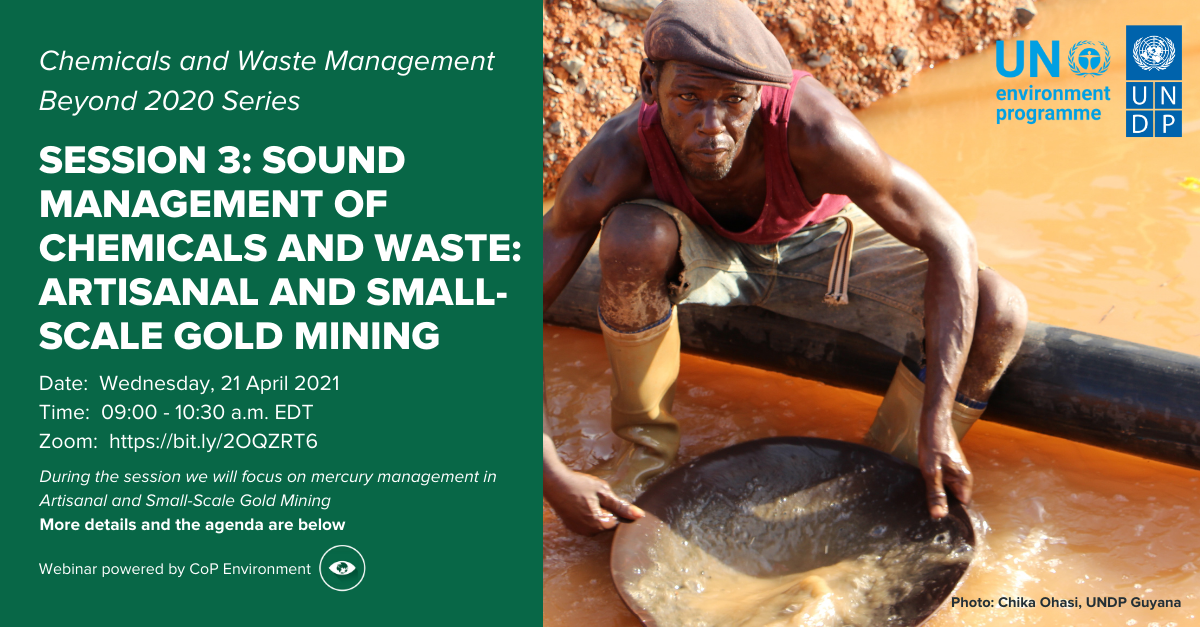You can register here and check the speakers' bios in the files attached. The presentation and recording are now available!
Please scroll down

Introduction
The Strategic Approach to International Chemicals Management (SAICM), adopted by the First International Conference on Chemicals Management (ICCM) on 6 February 2006 in Dubai, is an international policy framework promoting sound management of chemicals worldwide and, specifically, fosters for multi-sectoral, multi-stakeholder approaches toward the goals agreed to at the 2002 World Summit on Sustainable Development. One of the goals of cooperation is that chemicals are produced, used and managed in ways that minimize adverse impacts on the environment and human health.
Currently, SAICM stakeholders are engaged in a process to prepare recommendations regarding the Strategic Approach and sound management of chemicals and waste beyond 2020. It is expected that an ambitious global framework for chemicals and waste management post-2020 will be adopted at the fifth session of the ICCM (ICCM5).
This Webinar, organized by UNDP’s Chemicals and Waste team jointly with Chemicals and Waste GEF Unit of UNEP Chemicals and Health Branch at the Economy Division of UNEP and powered by UNDP’s Community of Practice on nature-based solutions and climate action, is the third in a series of information exchanges to assist in increasing the profile of chemicals and waste management. The webinar series is being organized within the framework of the project supported by the Federal Ministry of the Environment, Nature Conservation and Nuclear Safety of Germany (BMU).
This webinar will focus on mercury management in Artisanal and Small-Scale Gold Mining (ASGM). ASGM is defined as the use of rudimentary extraction practices of gold and is the largest source of mercury contamination globally, responsible for 37% of anthropogenic mercury emissions. This mercury enters the global pool of mercury and, due to the long lifetime of mercury once in the atmosphere, mercury from ASGM is believed to be transported far from its source of emission. ASGM occurs in over 70 countries, produces 12-15% of gold worldwide, and involves 10-15 million miners - including over 3 million women and children. Although ASGM is a source of income for many people around the world, it also results in a number of negative environmental, human health, and socioeconomic impacts.
Moderator: Mr. Tim Scott, UNDP
Agenda
-
Welcoming Address
Ms. Evelyn Swain, GEF
-
Overview of ASGM sector and its linkages to sustainable development
Mr. Ludovic Bernaudat, UNEP
-
planetGOLD as an example of multi-stakeholder cooperation in chemicals and waste management
Ms. Susan Keane, NRDC
-
Lessons learned on formalization of ASGM sector
Ms. Baiq Dewi Krisnayanti, UNDP Indonesia
-
Access to finance for artisanal small-scale miners
Mr. Mario Rodas, UNDP Ecuador
-
Gender and mining
Ms. Kirsten Dales, Senior ASGM Expert for planetGOLD+
-
Q&A and/or Moderated Discussion
-
Conclusion
Mr. Kasper Koefoed-Hansen, UNDP

Please log in or sign up to comment.